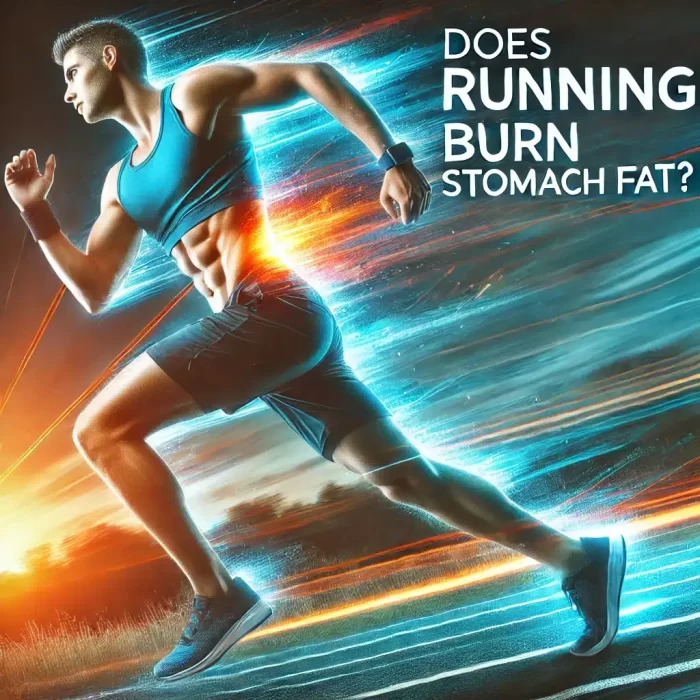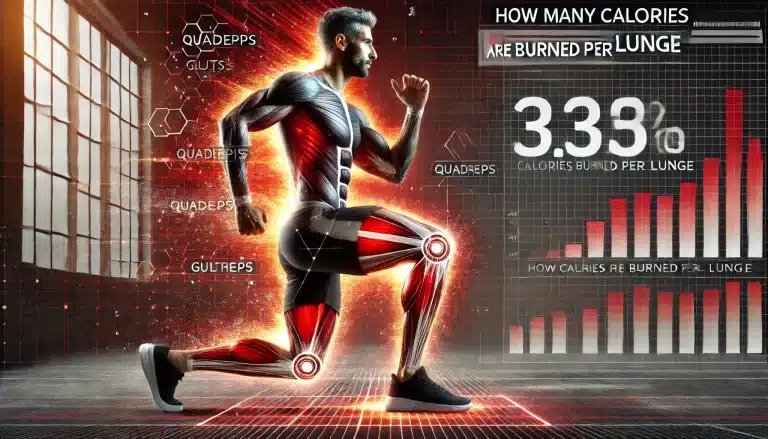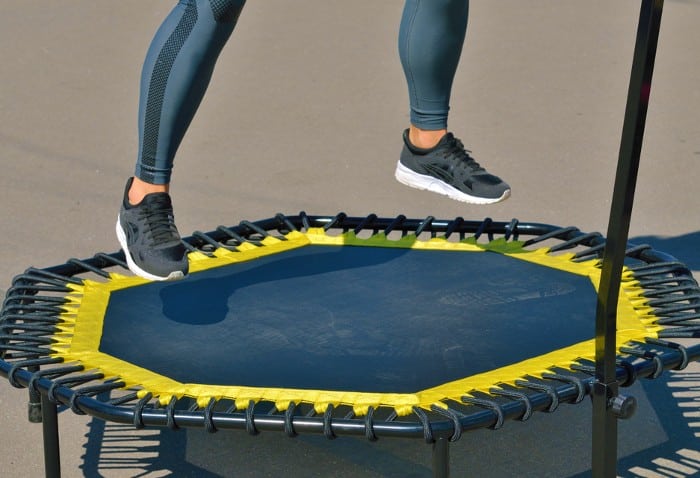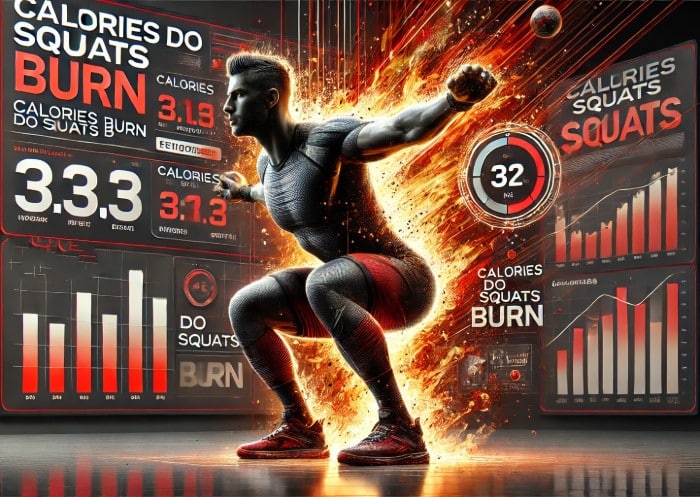Does Running Burn Stomach Fat?
Many people start running when they want to lose weight. Especially when it comes to burning off stubborn belly fat. That makes sense, right? Running is one of the easiest, most effective ways to get moving. No fancy equipment. No gym membership. Just you, your legs, and the pavement. But does it actually target stomach fat? Or is it a little more complicated than that?
As a strength and conditioning coach, I hear this question all the time, “Will running get rid of my belly fat?” The answer? Yes and no. Running can absolutely help you burn fat. But if you’re hoping to only lose fat from your stomach, that’s not how the body works. Spot reduction? A myth. Your body decides where to burn fat from, and unfortunately, it doesn’t always start with the belly.
But here’s the good news. When combined with the right approach, solid nutrition, strength training, and consistency, running is a powerhouse for fat loss. You can’t control where the fat burns first, but you can control your habits. And over time? That belly fat will shrink.
In this article, we’re breaking it all down. The science of fat loss. The best running strategies to burn belly fat. How to maximize your results. Let’s get into it.
Does Running Burn Stomach Fat?
1. Running Burns Calories, Which Leads to Fat Loss
Fat loss? It’s simple. Burn more calories than you consume. That’s the foundation. The energy balance equation. And when it comes to burning calories fast? Running is one of the best tools you’ve got.
A 150-pound person? They’ll burn 300-400 calories in 30 minutes of steady running.
A 200-pound person? Around 400-500 calories in the same time.
The numbers add up. Run more. Burn more. Lose more. But here’s where things get tricky—losing belly fat specifically? Not that easy.
Spot reduction? A myth. You can’t tell your body, “Hey, burn fat from my stomach first.” It doesn’t work like that. Genetics. Hormones. Individual fat storage patterns. They all decide where the fat comes off first. Some people lose belly fat early. Others? It’s the last thing to go.
But don’t get discouraged. Fat loss is a full-body game. If you stay consistent, if you make running a part of your routine, if you combine it with strength training, proper nutrition, and smart recovery, your body fat will decrease. And yes, eventually, that includes your midsection.
The key? Stick with it. Train smart. Stay patient. Fat loss isn’t instant, but it happens when you do the work.
2. Running Helps Reduce Visceral Fat
Not all belly fat is the same. Some fat just sits there. Some fat is way more dangerous.
There are two types of fat around your midsection:
- Subcutaneous fat – The soft fat under your skin. The stuff you can pinch.
- Visceral fat – The deep fat wrapped around your organs. The kind you can’t see.
Visceral fat? That’s the bad one. It’s the fat linked to higher risks of disease, diabetes, heart disease, and inflammation. It messes with your metabolism. It puts stress on your body. And too much of it? Not a good thing.
But here’s the good news. Running helps. A lot.
Research backs it up. A study published in Obesity Reviews found that people who did consistent aerobic exercise, including running, saw significant reductions in visceral fat, even if they didn’t change their diet much. That’s huge.
So, running doesn’t just help you look leaner. It helps you get healthier, on the inside. Better metabolism. Lower disease risk. Stronger body.
Want to lose belly fat? Lace up. Start moving. Your body will thank you.
3. High-Intensity Running Burns More Fat
Not all running burns fat the same way. Some styles? Way more effective.
If belly fat is the target, research shows that high-intensity interval training (HIIT) and sprint workouts burn more fat than steady-state cardio. And the science proves it.
A study in the Journal of Obesity found that HIIT workouts led to greater reductions in abdominal fat compared to traditional steady-state running. Why? Because HIIT forces your body to work harder.
The Science of HIIT & Fat Burn
When you sprint all out, your body goes into overdrive. Your heart is pounding, your legs burning, oxygen demand skyrocketing, and your metabolism going into high gear.
This creates a massive metabolic disturbance. Your body scrambles to recover. And that’s where the real magic happens, EPOC (Excess Post-Exercise Oxygen Consumption). Better known as the afterburn effect.
What does this mean?
HIIT doesn’t just burn calories while you’re running. It keeps burning fat for hours afterward. Your body stays in fat-burning mode long after you’ve left the track.
4. Running Improves Insulin Sensitivity, Which Can Help Reduce Belly Fat
Belly fat isn’t just about calories. It’s also about hormones.
One of the biggest culprits is insulin resistance. When your body stops responding well to insulin, it stores more fat, especially around your midsection.
That’s where running comes in.
How Running Helps
Studies show that regular aerobic exercise, like running, improves insulin sensitivity. Translation? Your body gets better at using carbs as fuel instead of storing them as fat.
It’s not just about burning calories at the moment. It’s about changing how your body handles fat over time.
The more you run, the better your metabolism works. Your body learns to burn fat instead of hoarding it. Your blood sugar stays balanced. And belly fat? It becomes way harder for your body to hold onto.
So if stubborn stomach fat won’t budge? Focus on consistency. Keep running. Let your body do the rest.
5. Running Can Help Manage Stress and Reduce Cortisol Levels
Stress makes fat stick. Especially around the belly.
Blame cortisol, the so-called “stress hormone.” When does it stay high for too long? Your body goes into survival mode. It holds onto fat, stores extra around the midsection, and makes losing weight feel impossible.
But here’s the good news. Running helps.
How Running Fights Stress & Belly Fat?
Lace up. Hit the pavement. Let your heart rate climb. Running, especially at a steady, moderate pace, lowers cortisol. It calms the nervous system. Eases stress. Tell your body, “Hey, we’re good. No need to store extra fat.”
And the benefits? They don’t stop there.
Running improves sleep, mood, and overall well-being. It clears your head. Makes everything feel a little lighter. And a body under less stress? It burns fat more efficiently.
So if stress is keeping belly fat glued in place? Move. Run. Sweat it out. Your body will thank you for it.
Best Running Workouts for Burning Stomach Fat:

If you are looking to optimize your running routine to burn fat efficiently, focusing on varied training intensities and strategic workout planning will give you the best results. Below are four highly effective running workouts that can help you reduce overall body fat, including belly fat.
1. Interval Sprints (HIIT Running)
High-intensity interval Training (HIIT) is a proven fat-burning method that alternates between bursts of maximum effort and short recovery periods. This type of workout increases calorie burn during and after exercise due to the excess post-exercise oxygen consumption (EPOC), also known as the “afterburn effect.”
How to do it:
- Warm up with 5-10 minutes of light jogging and dynamic stretching.
- Sprint for 30 seconds at maximum intensity.
- Walk or jog for 60 seconds to recover.
- Repeat for 10-15 rounds.
- Cool down with 5 minutes of light jogging and stretching.
Why it works: HIIT running triggers a metabolic response that promotes fat oxidation, particularly in the abdominal region. Research shows that HIIT workouts can be more effective at reducing visceral fat than steady-state cardio due to their ability to boost metabolism and improve insulin sensitivity.
2. Long-Distance Steady-State Runs
While HIIT workouts provide quick bursts of intense calorie burning, long-distance running at a steady pace also plays an important role in fat loss. This type of run is ideal for building endurance while keeping your body in a sustained fat-burning zone.
How to do it:
- Run at a moderate pace for 45-60 minutes.
- Keep your heart rate at 60-70% of your max (a pace where you can still hold a conversation but feel challenged).
- Maintain a consistent effort rather than pushing for speed.
- Cool down with 5-10 minutes of walking and stretching.
Why it works: This type of training teaches your body to use fat as a fuel source over long periods. While it does not create as much of an afterburn effect as HIIT, it still plays a key role in sustained calorie expenditure and long-term fat loss.
3. Hill Sprints
Hill sprints combine the benefits of HIIT and strength training, making them one of the most efficient workouts for fat burning, muscle engagement, and cardiovascular conditioning. Running uphill requires your muscles to work harder, leading to greater calorie burn and enhanced metabolic activity.
How to do it:
- Find a steep hill or set a treadmill to a 10-12% incline.
- Sprint uphill for 20-30 seconds.
- Walk or jog back down for recovery.
- Repeat for 8-12 rounds.
- Finish with 5 minutes of light jogging and stretching.
Why it works: Hill sprints activate more muscle fibers in the legs and core while also improving running efficiency and calorie burn. The added resistance from the incline forces your body to work harder, which can accelerate fat loss, particularly in the midsection.
4. Tempo Runs
Tempo runs are designed to be performed at a challenging but sustainable pace, helping you increase your lactate threshold and improve fat utilization as an energy source.
How to do it:
- Start with a 10-minute warm-up at an easy pace.
- Run at a hard but controlled pace (about 80-90% of your max effort) for 20-30 minutes.
- Cool down with a 5-minute slow jog and stretching.
Why it works: Tempo runs train the body to be more efficient at burning fat, increase aerobic capacity, and improve overall metabolic function, making them an excellent complement to fat-loss-focused running programs.
How to Structure Your Running Routine for Fat Loss?
To maximize fat-burning results, structuring your weekly running schedule is key. A balanced plan will help you avoid overtraining while optimizing calorie burn and fat loss.
Sample Weekly Running Schedule:
- Monday: HIIT sprints (30 minutes)
- Tuesday: Strength training + light steady-state run (30 minutes)
- Wednesday: Tempo run (40 minutes)
- Thursday: Rest or active recovery (light walking, yoga, or stretching)
- Friday: Hill sprints (30 minutes)
- Saturday: Long-distance steady-state run (45-60 minutes)
- Sunday: Rest or low-impact activity
A schedule like this allows for variation in intensity, helping to prevent burnout while ensuring steady progress in fat loss and endurance.
Additional Factors That Influence Fat Loss While Running
Although running is a powerful tool for burning calories and improving overall fitness, several other factors contribute significantly to how effectively you lose stomach fat. Ignoring these elements can slow down progress, while addressing them can accelerate fat loss and improve overall health.
1. Strength Training for Enhanced Fat Burning
While running helps burn calories, incorporating strength training into your routine is essential for maximizing fat loss. Strength training builds lean muscle mass, which increases your resting metabolic rate (RMR), meaning you burn more calories even when you’re not exercising.
- Muscle is metabolically active, so the more lean muscle you have, the more energy your body burns throughout the day.
- Strength training prevents muscle loss, which can occur with excessive cardio-based weight loss.
- It enhances overall body composition, making you look leaner and more defined as you lose fat.
How to incorporate it:
- Aim for 2-3 strength training sessions per week.
- Focus on compound movements such as squats, deadlifts, lunges, push-ups, and rows.
- Use progressive overload by increasing weights, reps, or intensity over time.
2. Nutrition Matters More Than Running Alone
No matter how much you run, if your diet is not aligned with your goals, you may struggle to lose fat, especially in the abdominal area. Nutrition plays the biggest role in creating a calorie deficit, which is necessary for fat loss.
- Protein intake is crucial: Eating enough protein helps preserve lean muscle mass, keeps you full longer, and supports recovery.
- Reduce processed foods: Foods high in sugar and refined carbohydrates contribute to excess calorie intake and can lead to fat storage, especially in the midsection.
- Eat fiber-rich foods: Whole foods like vegetables, fruits, and whole grains aid digestion and keep you full longer, helping with appetite control.
- Stay hydrated: Dehydration can lead to increased hunger and poor workout performance. Aim for at least 2-3 liters of water per day.
How to optimize your diet for fat loss:
- Maintain a moderate calorie deficit (300-500 calories per day) to ensure gradual fat loss.
- Prioritize lean protein sources such as chicken, fish, tofu, and legumes.
- Consume healthy fats like avocados, nuts, seeds, and olive oil to support hormone regulation.
- Limit alcohol and sugary drinks, which provide empty calories and contribute to fat accumulation.
3. Sleep and Stress Management Play a Major Role
Many people overlook the importance of sleep and stress when trying to lose fat, but both have a significant impact on hormone regulation, energy levels, and fat storage.
- Poor sleep increases cortisol, a stress hormone that is linked to increased belly fat storage.
- Lack of sleep disrupts appetite-regulating hormones, leading to increased cravings for high-calorie foods.
- Chronic stress can lead to emotional eating, making it harder to stay in a calorie deficit.
How to improve sleep and stress levels:
- Aim for 7-9 hours of quality sleep per night.
- Establish a consistent sleep schedule, going to bed and waking up at the same time every day.
- Reduce screen time before bed, as blue light from phones and computers can interfere with melatonin production.
- Incorporate stress management techniques, such as deep breathing, meditation, yoga, or even walking outdoors.
- Engage in recovery activities, like foam rolling or stretching, to prevent burnout and overtraining.
4. Hydration and Recovery are Essential
Proper hydration and recovery strategies are often underrated factors in fat loss. Being well-hydrated improves metabolism, energy levels, and digestion, while recovery ensures you avoid overuse injuries and sustain long-term progress.
- Hydration helps regulate metabolism and digestion, making it easier for your body to efficiently process nutrients and burn fat.
- Drinking water before meals can reduce calorie intake, helping you maintain a calorie deficit.
- Electrolyte balance is crucial for runners, especially if you sweat heavily during workouts.
- Recovery days prevent burnout, allowing your body to adapt and become stronger over time.
How to optimize hydration and recovery:
- Drink 16-20 ounces of water first thing in the morning to kickstart hydration.
- Consume water throughout the day rather than drinking large amounts all at once.
- Include restorative activities like foam rolling, stretching, or yoga at least 2-3 times per week.
- Plan 1-2 full rest days per week to allow muscle recovery and prevent injuries.
5. Consistency is the Key to Long-Term Fat Loss
One of the biggest reasons people fail to lose stomach fat is inconsistency. Running sporadically, changing workout programs too often, or following extreme diets will not produce sustainable results. Fat loss is a gradual process, and staying committed to your training, nutrition, and recovery is crucial.
- Set realistic goals: Instead of aiming for drastic changes, focus on small, sustainable improvements each week.
- Track progress beyond the scale: Monitor body composition changes, energy levels, and performance improvements rather than relying solely on weight.
- Stick to a well-balanced routine: Running, strength training, proper nutrition, and recovery should all be part of your plan.
Final Thoughts: Does Running Burn Stomach Fat?
Running can help burn belly fat. But on its own? Not enough. Fat loss isn’t about one workout. It’s a process. A system. A long game.
You can’t pick and choose where the fat burns first. Wish you could. But you can’t. Your body decides. And it plays by its own rules. But running? It helps. A lot. Creates a calorie deficit. Fires up metabolism. Trains your body to use fat for fuel. Stick with it, and over time? That belly fat starts to go.
Want real results? Don’t just run.
The Winning Formula
Mix it up. Sprints. Intervals. Long steady runs. Each type hits differently. HIIT? It Burns fast and keeps burning after. Distance running? Melts calories, and builds endurance. But neither is enough alone. Balance is key.
Running is powerful. But pair it with strength training and now we’re talking. More lean muscle? Faster metabolism. More calories burned, even at rest. Then there’s nutrition. Sleep. Recovery. The stuff no one wants to hear, but the stuff that matters. Put it all together? Now you’ve got a fat-burning system.
This won’t happen overnight. Real results take time. Some days? You’ll feel like nothing’s changing. Others? You’ll catch a glimpse in the mirror. Notice your clothes fit looser. Feel lighter. Stronger. And you’ll know. It’s working.
So lace up. Get moving. Stay consistent. Fat loss isn’t magic. It’s effort. Show up. Put in the work. And sooner or later? The results will, too.






